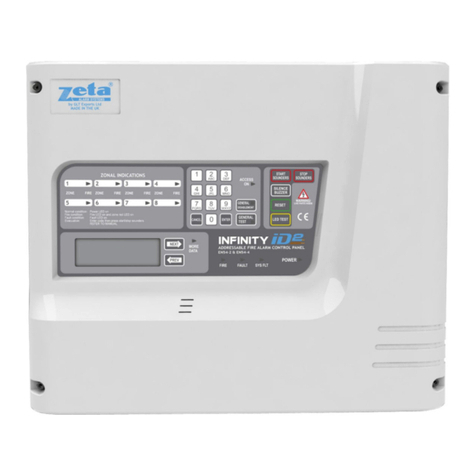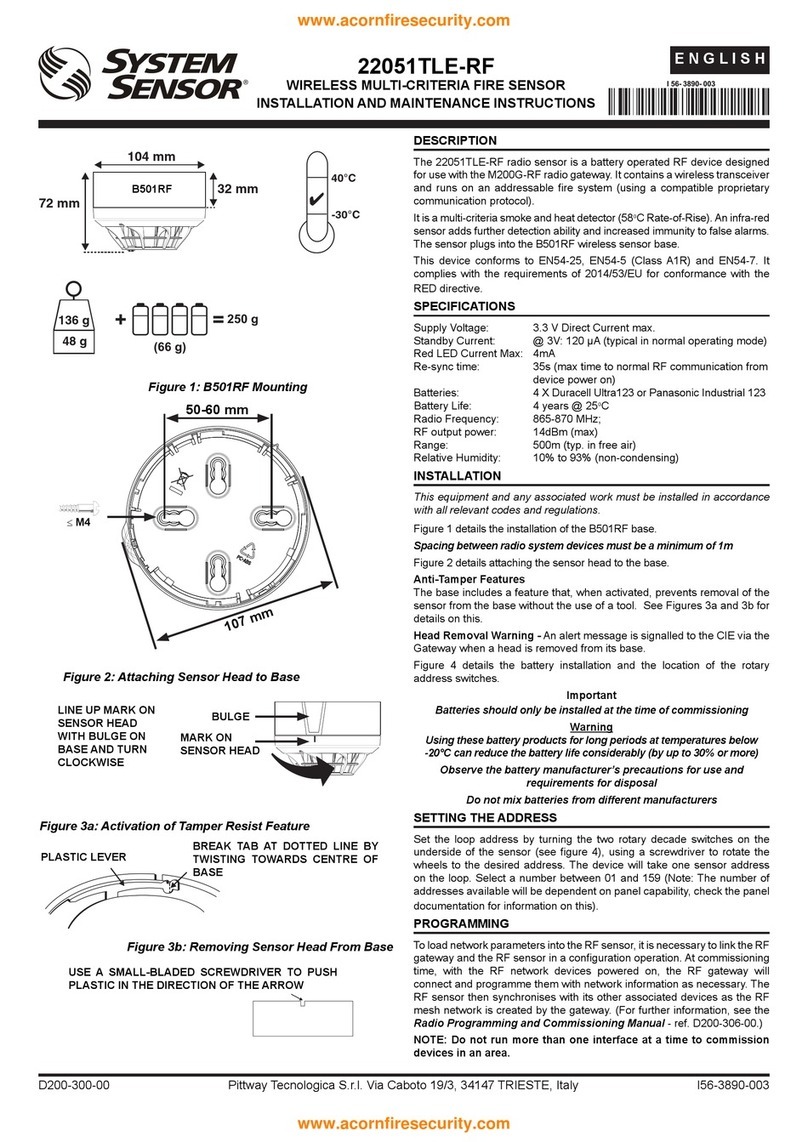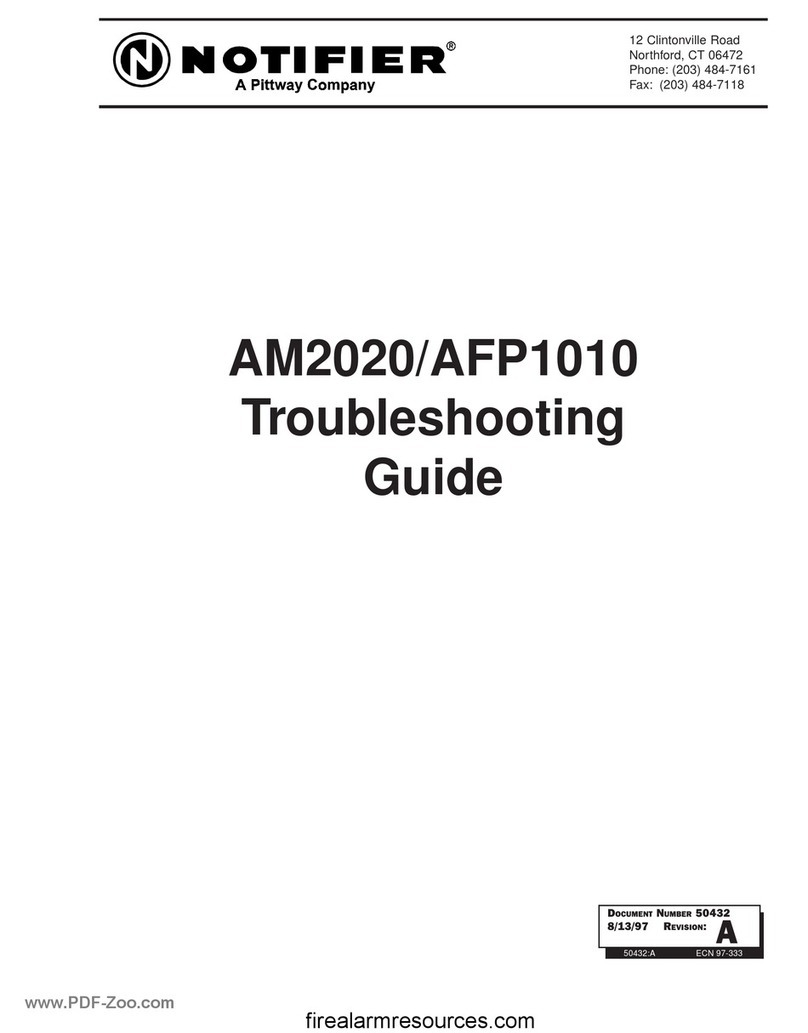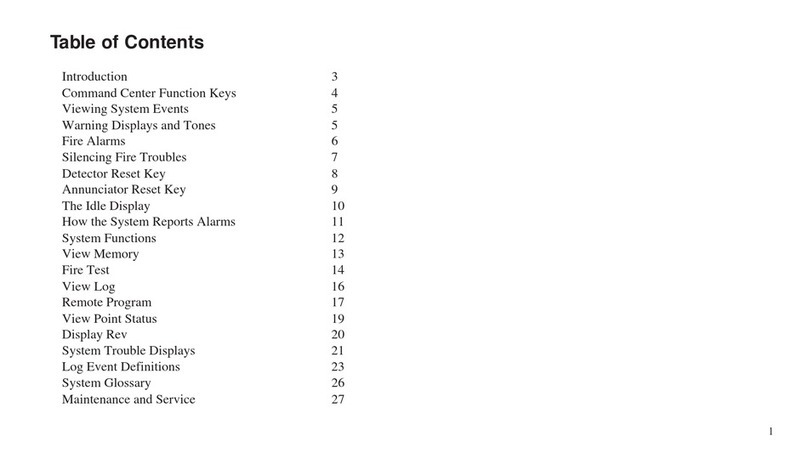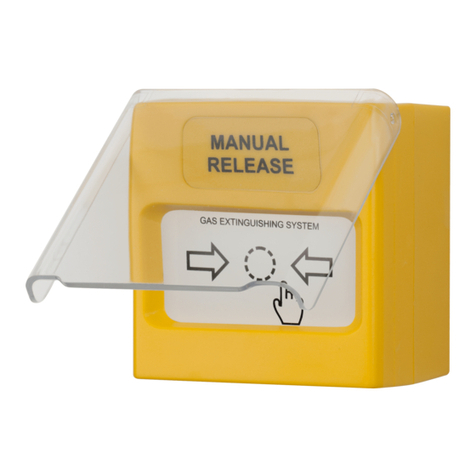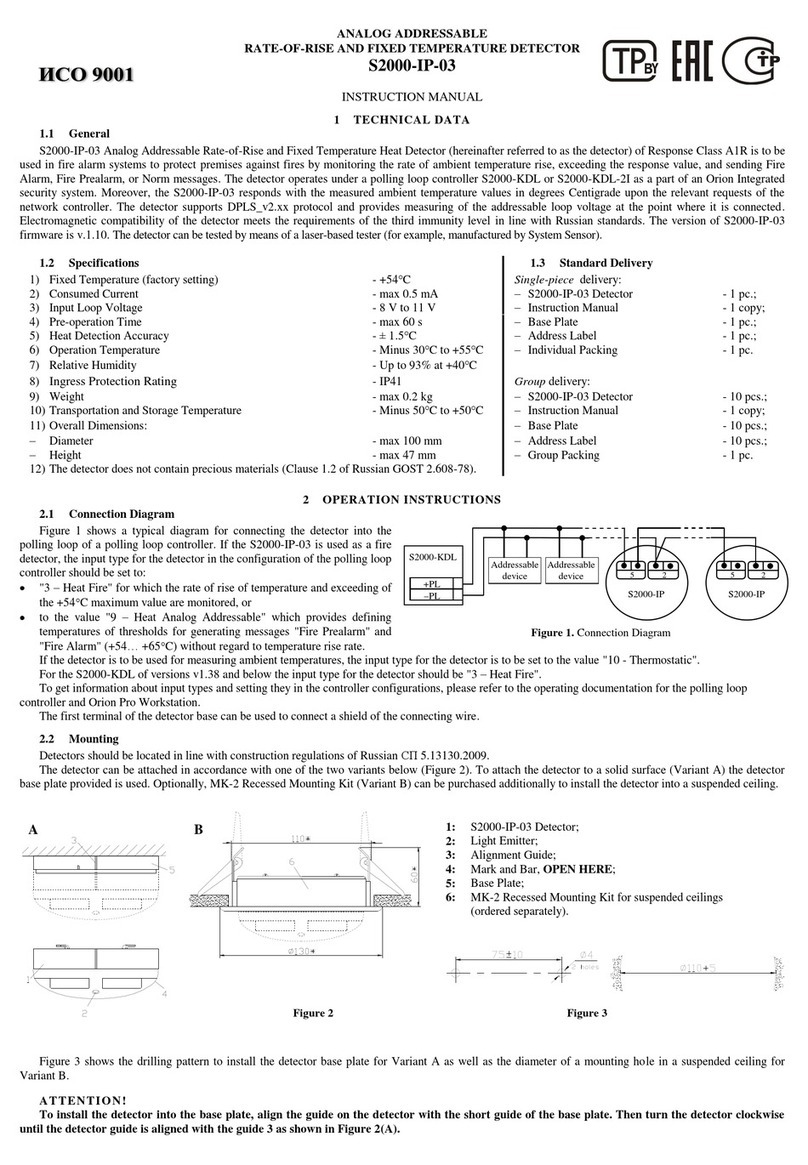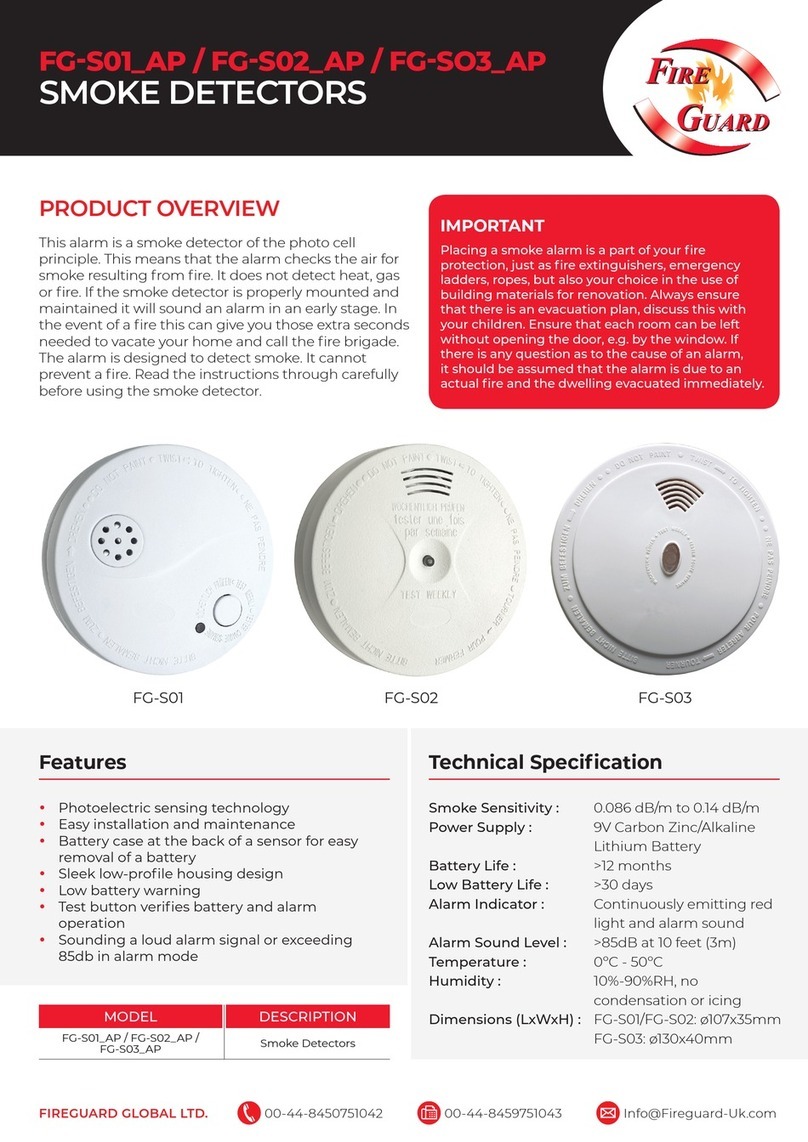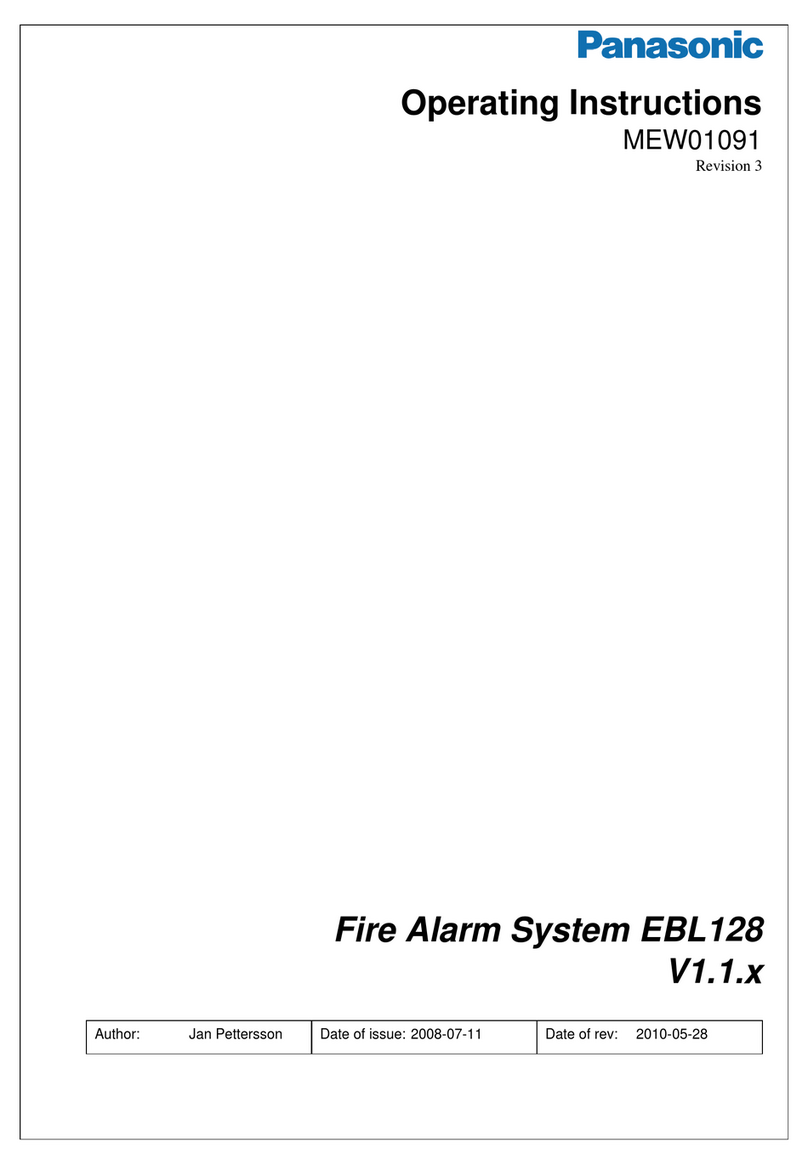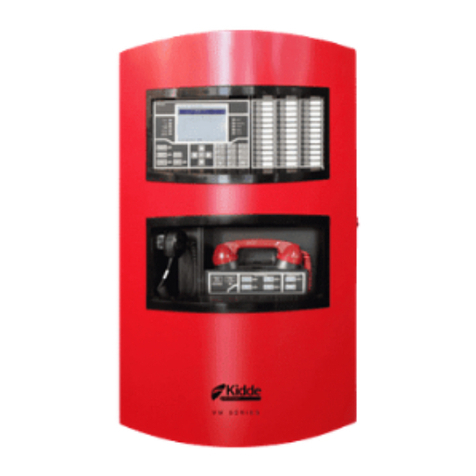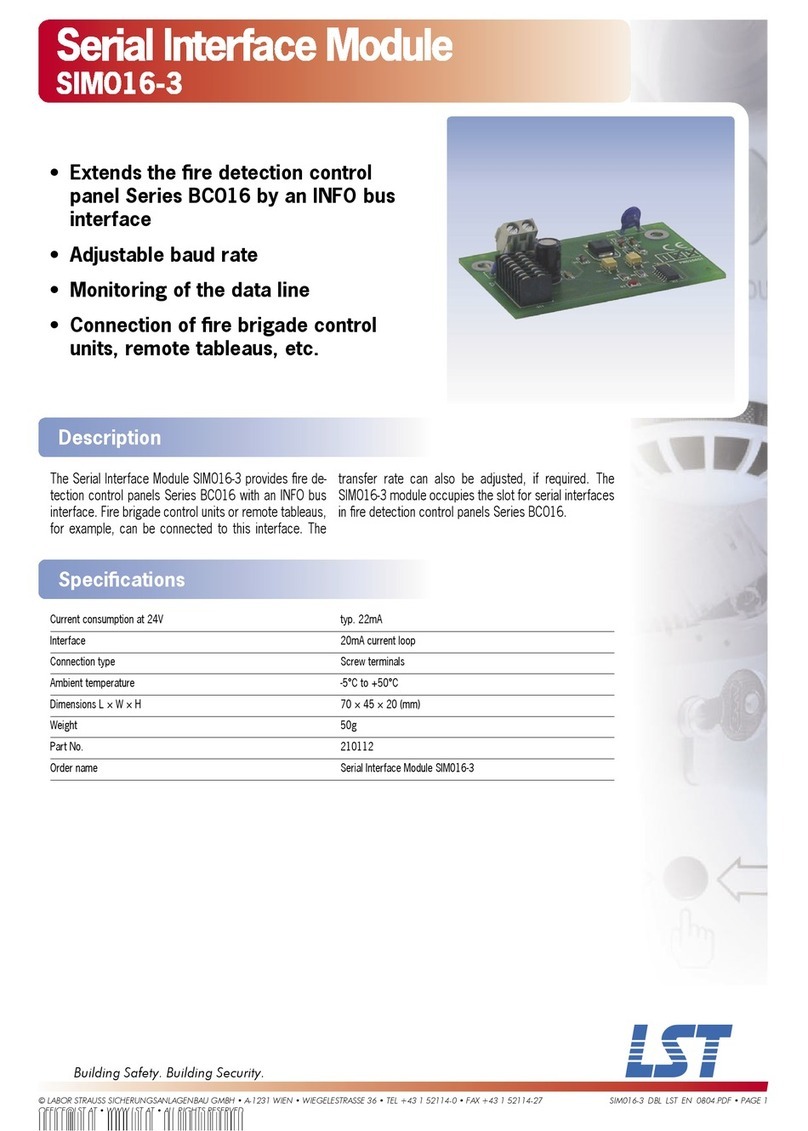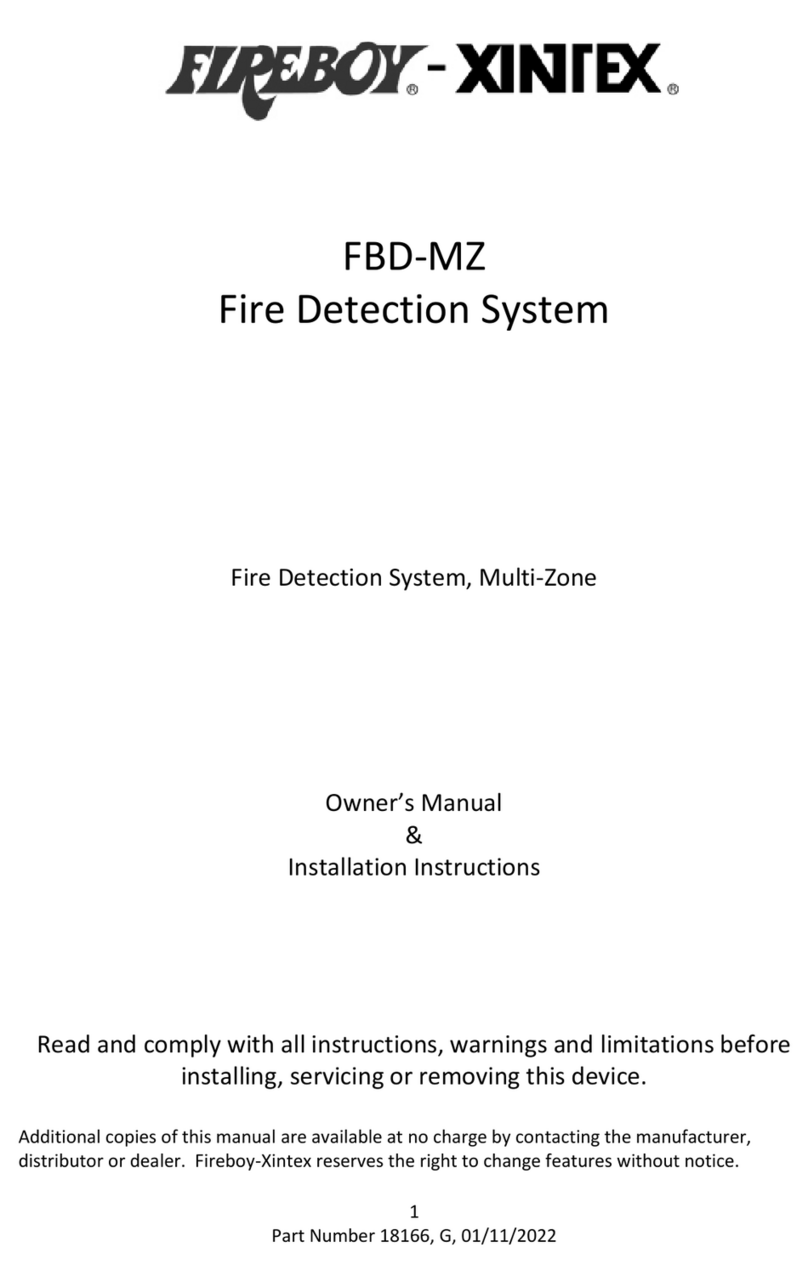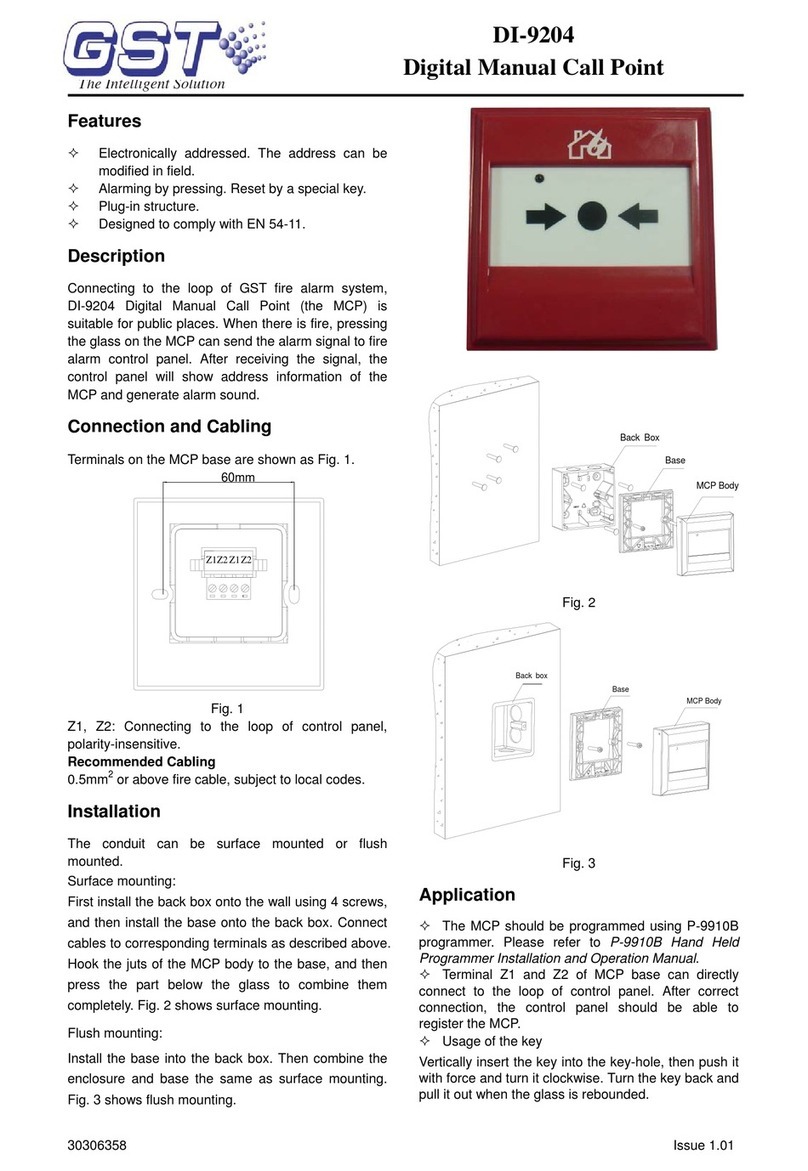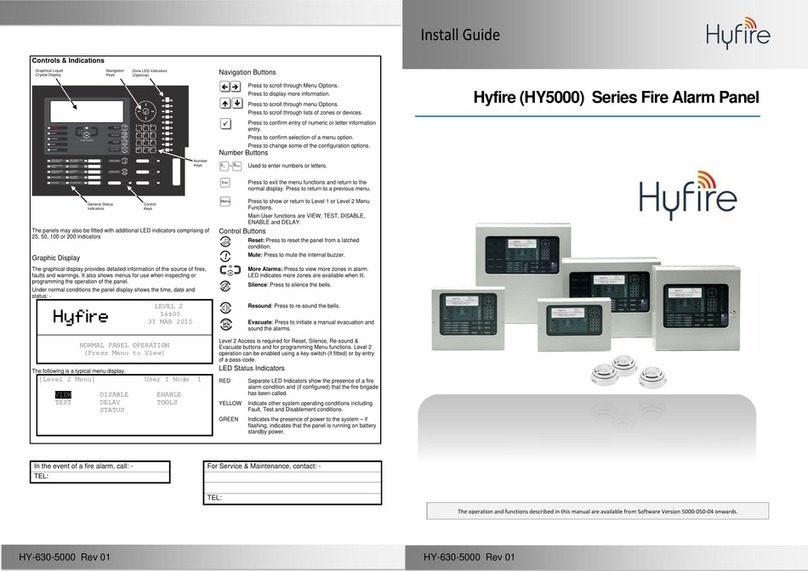
Operating Instructions
for the
DS9400 Series Fire Alarm
Control/Communicators
Understanding the Built-in Keypad
The keypad built-in to the control/communicator is an alpha-numeric LCD keypad. It has a two line by 16 character
display to provide information on various control panel functions. In most instances, the top line of the display
provides general system status information, while the second line describes specific devices that may be relevant
to the current system status. When keys are being pressed, the display usually shows the current action on the top
line, while displaying rotating menu choices on the second line. A built-in sounder is used to annunciate keystroke
entries and as an interior warning device.
Modes of System Operation
Normal Operation: When the system is operating normally, it displays “SYSTEM NORMAL” on the top line of the
display, the Power LED is on steady, and no other LEDs are lit. If the system is programmed to require a PIN, the
second line of the LCD screen will display “ENTER PIN:”, otherwise the control panel will bypass this display and
will show a rotating menu of possible user actions.
Alarm Operation: When an alarm occurs, the top line of the display will show “FIRE ALARM”. This display will
override any other system display. The second line of the display will show the number of the point that is in alarm,
alternating with the programmed description for the affected point. If more than one alarm (or other off-normal
condition) is active, they will be shown on the second line of the display, one after another. The built-in sounder turns
on with a steady tone, and outputs programmed to activate with the current alarm condition(s) will activate.
Trouble Operation: When a trouble condition occurs (e.g. wiring for a point is cut, AC power fails, etc.), the
sounder will activate briefly, every 10 seconds. The Trouble LED will light and the top line of the display will show
“SYSTEM TROUBLE”. The second line of the display will identify the specific problem.
Local Service Representative
Name________________________________
Address ______________________________
_____________________________________
Phone_______________________________
This document must be framed and mounted
in view adjacent to the FACP.
Silence
History
Reset
12 3
456
789
Drill
Disable
Test
ClearProg Cmnd
0 #
*
Power
Silenced
Trouble
Alarm
The green PowerLEDison when ACpowerispresent,
and flasheswhen the unitisoperating frombatterypower.
The red AlarmLEDilluminateswheneverthe systemhas
registered an alarmand hasnotbeen reset.
The yellowTroubleLEDislitwheneverthe systemhas
detected aproblemwithitswiring orinternalcircuitry.It
remainson even when the troublesounderhasbeen
silenced,turning off onlywhen the underlying trouble
condition hasbeen corrected.The troubleLEDflashes
whileprogramming mode isactive.
The yellowSilenced LEDilluminateswhen an alarmor
troublecondition hasbeen manuallysilenced bythe user.
It turnsoff when the condition thatwassilenced iscorrected.
The Clearkeycan be used todeleteincorrectlyentered
data.Whileprogramming,itcan be used toexitmenusor
exitprogramming mode entirely.
The Drill keyisused toactivatethe notification appliance
circuitsmanually.
The Historykeyallowsthe recordofsystemeventstobe
viewed.
The Command keyisused toaccptdatawhen in
Programming mode.
The Silencekeyquietsthe bells/sirensforan alarmor
troublecondition.
The Resetkeybrieflyturnsoff powertodetectorstoreset
themand clearsanyoff-normalconditions.
The Programming keywill selectthe programming mode.
The Disablekeyallowsthe systemtodisableorre-enable
inputs,notification appliancecircuitsorrelays (outputs),
and the dialer.
The Testkeyallowsone ofseven specialtestmodesto
be selected.


